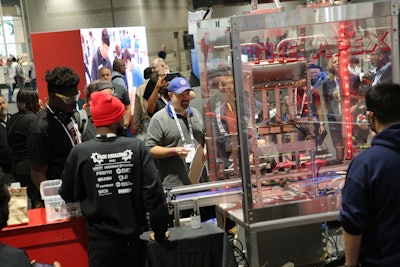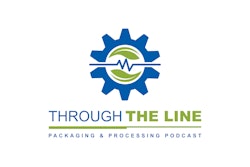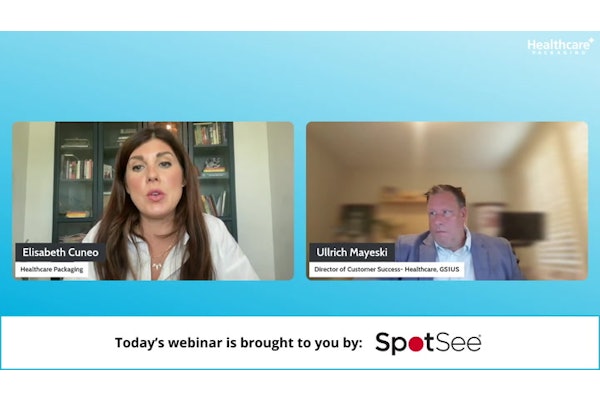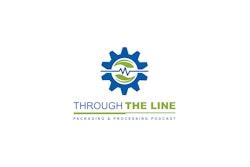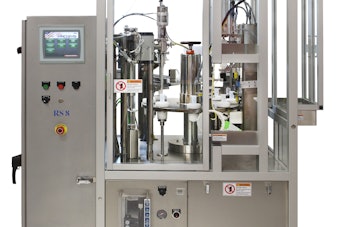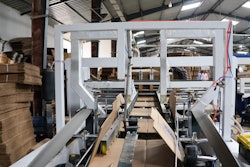The halls of PACK EXPO International in Chicago reliably bustle with machine suppliers and CPGs connecting every two years. But a keen observer might notice a different kind of event unfolding inside the show; a high-stakes packaging competition among high school students, bridging the classroom and the manufacturing floor – The PACK Challenge.
Now in its third season, the competition challenges students to tackle real-world engineering problems.
“This year, we’re asking them to palletize,” explains Kate Torrence, director of workforce development at PMMI. “There are three different size blocks that we’ve already provided the files for, so they can 3D print them. They will take them from a single line conveyor, stop them, and put them on a pallet. We’ll judge them based on stability, how many blocks can go on a pallet, and how many layers they can get.”
The challenge doesn’t stop at engineering, though; It also includes a sales and marketing component.
“They get to say why they’re better than competitors. We want them to get some business acumen along with the engineering side,” explains Torrence.
For the first time, The PACK Challenge is open to students nationwide. It starts with a virtual qualifier, where students develop a five-minute video presentation to showcase their product design and plan. Six finalists move forward from the qualifier, at which point PMMI provides a kit with all the components needed to start building.
“They’ll have a semester and a half to build what they came up with, and then those six finalists will ship their machines to PACK EXPO International, where we’ll have an operator training competition, a sales and marketing competition, and an FAT competition,” says Torrence.
What’s in it for these students?
The most immediate incentive for participating teams is a host of monetary rewards for several categories. Students compete for Overall Best in Show, second and third place prizes, and category-based awards like for the best FAT or sales and marketing pitch. That money goes directly to the schools, which can then choose how they wish to spend it.
But the benefits of The PACK Challenge extend far beyond the cash prizes – it offers valuable industry exposure to show these students what a career in packaging can entail. That even includes networking with nearby industry professionals.
“We try to match every single finalist team with a local PMMI company, so [students] can have them as a mentor, tour their facilities, and have that direct industry relationship,” says Torrence. “And on top of that, they get to come to PACK EXPO and see all the different vertical markets that are in the industry.”
This strategy is working; participants truly are getting excited for an engineering career ahead.
“PACK Challenge really sparked my love for engineering and made me want to go into manufacturing or industrial engineering,” said one previous participant.
Said another, “PACK Challenge has given me the push to go to college to pursue a degree in engineering. 14% of engineers are female, so I like being able to push those boundaries and encourage other girls to join STEM!”
How CPGs can get involved in The PACK Challenge
For CPGs, The PACK Challenge is a strategic opportunity to invest in the future workforce.
Take it from PepsiCo, the competition’s title sponsor in the past two seasons. “PACK Challenge not only equips students with hands-on, practical experience but also opens their eyes to the vast opportunities and innovations within the industry,” says Ron Khan, vice president, packaging, beverages at PepsiCo. “By sponsoring this competition, we aim to inspire students and underscore the importance of innovative thinking and technical skills in driving the future of sustainable and efficient packaging solutions.”
Sponsorship opportunities include several funding tiers for maximum accessibility for CPGs. They include Season Title Sponsorships at $100,000 (as a two-year commitment of $50,000/year) all the way down to General Supporters at $1,000+, and even In-Kind technology and Equipment Sponsorships to provide equipment or components for the competition.
All sponsorship contributions go directly to supporting the competition, whether its travel expenses, prizes, or components – helping the expansion of a program built to generate future talent.
Further, mentorship is another avenue for industry involvement. While mentors have traditionally been machine builders in previous years, CPGs have an opportunity to share valuable insights. “They’re essentially who the PACK Challenge customer is, so having that perspective when working with the schools would be very beneficial, in terms of engineering, programming, marketing, sales, and even just overall operations,” says Torrence.
By engaging with this competition, companies not only contribute to workforce development, but also position themselves as leaders in fostering the next generation of talent. As the competition grows, so too does the potential for shaping a skilled and informed workforce ready to face the challenges of tomorrow.
